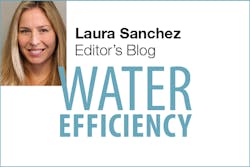According to the American Society of Civil Engineers, there are an estimated 240,000 water main breaks per year in the US—events that waste more than 2 trillion gallons of treated drinking water.
Asset management is essential for pipeline integrity. But many water utilities today find themselves limited in their water pipeline asset management by the lack of data to support decision-making and predict life cycle variables. How does a plant operator know what areas of a system to repair or replace without historical information?
Researchers at Virginia Tech aim to alleviate this issue by creating a water infrastructure database. The team has reached out to 500 water utilities and 100 federal facilities to launch a five-year program, funded by the US Bureau of Reclamation, to collect data on the nation’s water systems.
This data, gathered via secured data transfer protocols, will be housed in a database developed by Sunil Sinha, professor in the Charles E. Via Jr. Department of Civil and Environmental Engineering in the College of Engineering. Sinha hopes that the Pipeline Infrastructure Database, or PIPEiD, will help advance the understanding of water pipeline performance and will support asset management strategies.
“A basic requirement of an asset management program is knowledge of assets: What is the current state? What is the level of service? Which are the critical assets? What is the risk associated with failures? What are the minimum life cycle cost, O&M, CIP, and funding strategies?” explained professor Sinha. “Decisions cannot be made in the absence of knowledge. Knowledge is developed from information on the assets. Information is derived from good quality data, large datasets, and validated models and tools. PIPEiD will provide the secured and centralized database platform to address all three major infrastructure asset management levels: strategic, tactical, and operational, and for water utilities of all sizes across the country.”
The Bureau of Reclamation hopes that the database will allow it to develop decision-support systems to help evaluate the condition and failure risk profiles of water infrastructure and predict life cycle management needs.
“How a nation operates, retrofits, and expands its pipeline infrastructure networks will help determine the quality of life for future generations and that nation’s competitiveness in the global economy,” said Sinha in a press release. “In order to meet the important challenges of the 21st century, a new paradigm for the planning, design, construction, and management of water pipeline infrastructure is required, one that addresses the conflicting goals of diverse economic, environmental, and societal interests.”
What are your thoughts? Do you see the development of an infrastructure database as a key step forward in understanding asset management? Do you think that it will reduce the number of water main breaks that take place each year?
